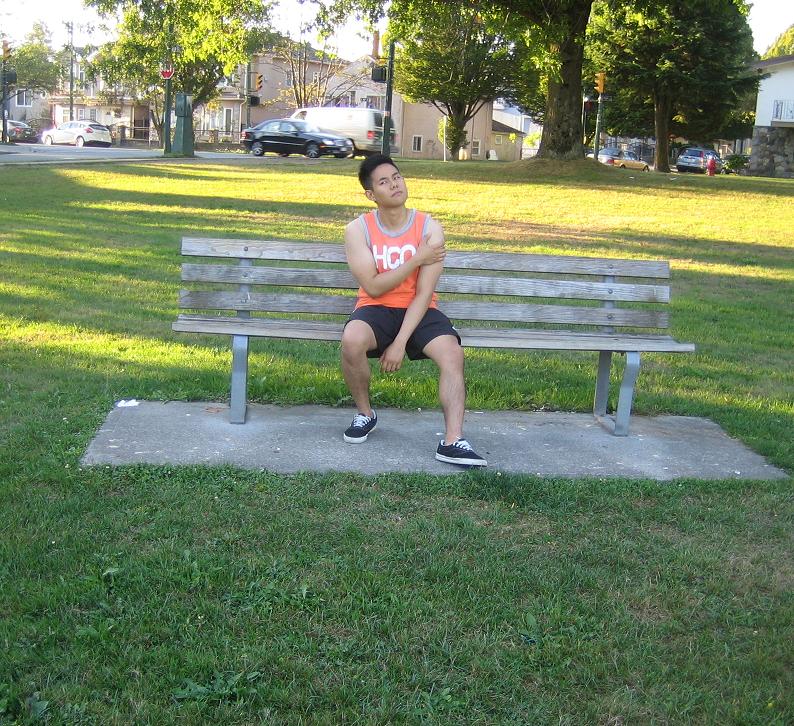A broken collarbone or clavicle fracture can occur in all age groups. Generally, the collarbone is attached to the upper part of the breastbone to the shoulder blade. The injuries can be caused by falls, injuries from sports and vehicular accidents. Sometimes, infants can break the collarbone during the birth process.
[youtube url=”https://www.youtube.com/watch?v=huTdHYMnEa0″ width=”220″]Disclaimer / More Information
The data and information posted on this page on broke bones is for learning purposes only. To learn to recognize, manage and help individuals with broken bones, dislocations, fractures and other skeletal injuries, register for a standard first aid class today.
Symptoms of broken collarbone
- At first, swelling and bruising of the area
- Pain that becomes severe when the moving the shoulders
- Pain upon touching the clavicle
- Sagging shoulder
- A bump develops on or close to the shoulder
Pain that becomes severe when the moving the shoulders - A munching noise or crushing sensation can be heard when moving the shoulder
- In addition, tingling or numbness sensation in the arms or fingers
- Stiffness or inability to move the shoulder
- Lastly, newborn babies cannot move their arms for several days due to birth-related collarbone fracture
Causes
- Falling into a shoulder or onto an outstretched hand.
- Vehicular trauma from a motorcycle or a car.
- Birth injuries among babies after passing through the birth canal
Treatment
- Take plenty of rest for fast healing of the condition and reduce the chances of making the condition worse. Generally, it is recommended to get at least 8 hours of sleep
- Apply an ice pack on the affected area to lessen the pain and swelling. Wrap an ice pack with a towel and apply on the area for at least 20 minutes every hour on the first day. On the next few days, apply the pack every 3-4 hours. If ice is not available, a bag of frozen vegetable such as peas is also good for the condition. Avoid applying ice directly on the skin to prevent frostbite and making the condition worse.
- Wear a simple arm sling or a figure-of-eight wrap immediately after the fracture to support and keep the area in position while healing. Wear the sling for at least 3-4 weeks.
- Take the prescribed over-the-counter pain medication such as acetaminophen or a non-steroidal anti-inflammatory drug (NSAID) such as ibuprofen or naproxen to lessen the pain and inflammation.
- Eat foods rich in calcium contents which are necessary for building bone. In addition, some foods rich in calcium contents include milk, cheese, yogurt, broccoli, kale, dark, green and leafy vegetable, sardines and canned salmon.
Additional measures
- Get plenty of vitamin D which is needed for the absorption of calcium. Spend some time under the sun and include eggs, meat, mackerel, sardines and meat in the diet. Other foods that are rich in Vitamin D include cereals, dairy, powdered milk and soy products.
- Seek the help of a physical therapist for some rehabilitation exercises. The therapist will provide some exercises to strengthen and increase the flexibility of the muscles.
- Lastly, when the swelling is reduced, apply heat on the area to increase the circulation of blood in the area. Apply a warm compress for at least 15 minutes. In addition, avoid placing heat directly on the skin. Make sure that it is wrapped with a towel to prevent burning the skin.
FACT CHECK
https://www.nhs.uk/conditions/broken-collarbone/
https://www.mayoclinic.org/diseases-conditions/broken-collarbone/symptoms-causes/syc-20370311
https://orthoinfo.aaos.org/en/diseases–conditions/clavicle-fracture-broken-collarbone/


